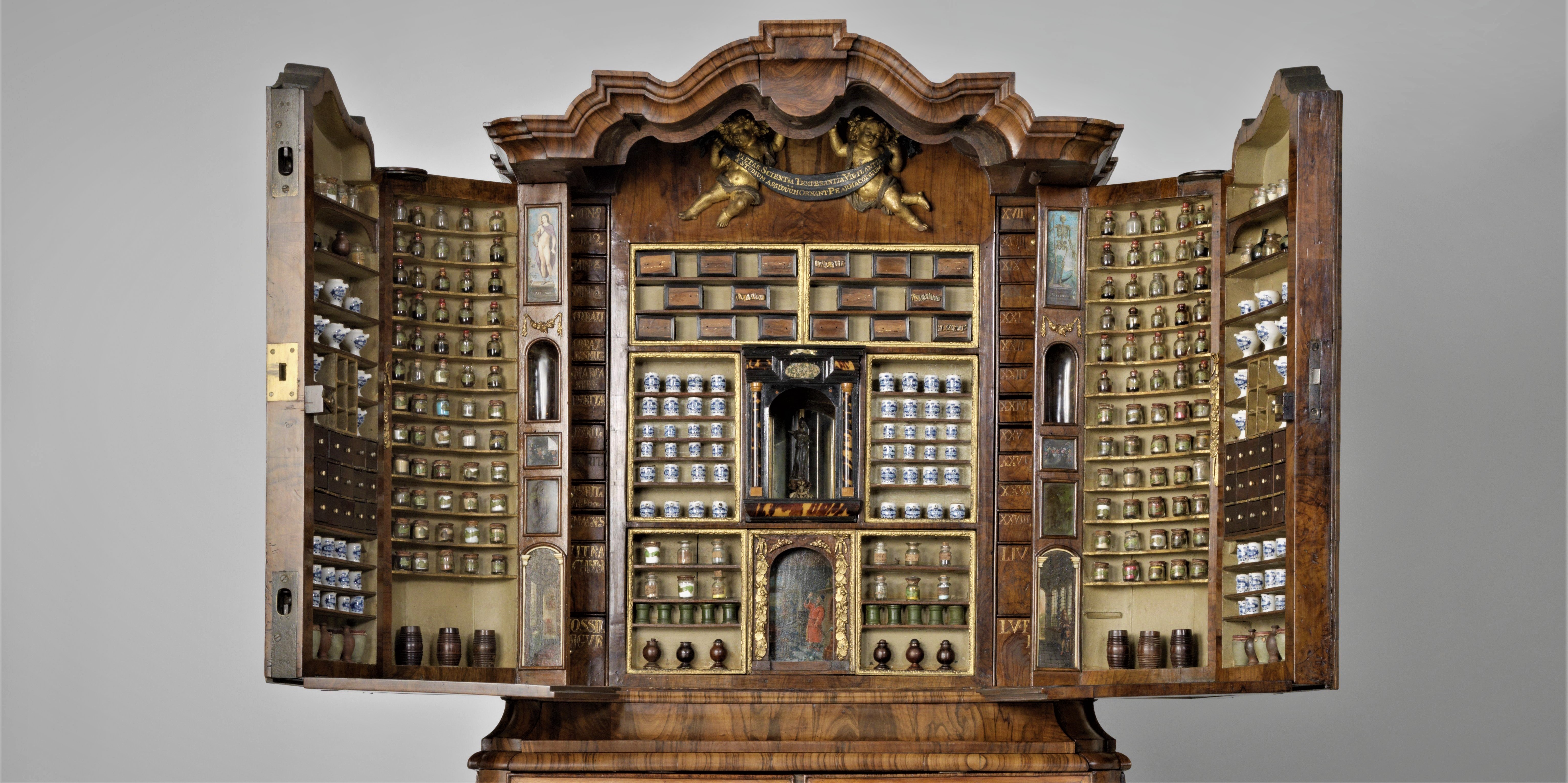The Medicine Cabinet
BK-1956-44 cr (2).jpg

The Medicine Cabinet aims to pilot new means of collaboratively creating world-class materials for exploring the History of Medicine. This portfolio illustrates this approach and the features of the Cabinet platform designed to support it.
- 3D images allow users to ‘virtually handle’ rare and significant objects. One 3D image in this portfolio (the anatomical model) also illustrates the capacity to tag and annotate these 3D models. Another (the Danby Gate, under ‘Gardens’) experiments with the use of 3D models of the built environment.
- 2D images permit users to explore zoomable photographs, paintings, and engravings in high resolution. In this portfolio, the museum of the leading apothecary of Verona, Francesco Calzolari (under 'Collections') and the map of Oxford (also in 'The Danby Gate') best exemplify this functionality.
- Videos – embedded in the commentaries or linked from the text – are illustrated in all three topics on Anatomy, as well as Dondi’s ‘astrarium’ (under 'The Heavens'), Galileo’s telescope, and Hooke’s microscope (under 'Lenses').
- Existing digital resources ripe for integration into this pedagogical platform can be found for anatomical engravings, the Bobart’s Herbaria ('Gardens'), and The Casebooks Project ('The Heavens').
- Gathering materials from multiple sources is exemplified by material in this little portfolio from collections in Amsterdam, Edinburgh, Florence, Milan, Padua, Paris, Toronto, Vienna, and Washington D.C., as well as multiple institutions in Cambridge, Oxford, and London (Royal College of Physicians, Science Museum, and Wellcome Collection).
- Public engagement with all of these materials can take place in many contexts: in a museum, in the classroom, during private formal study, or for personal interest.
This small selection has been assembled primarily from materials created for teaching early modern medicine, science, technology, and art at undergraduate level. It represents only a point of departure: glimpses of the ultimate destination are provided by proposals for enhancement indicating the wealth of materials and opportunities which could be exploited during a large-scale pilot project.
Image: Collector's cabinet with minature apothecary's shop, anonymous, Delft, 1730.
H 206.8cm × W 96.5cm × D 74.0cm. Rijksmuseum, object no. BK-1956-44 (public domain).
Units





